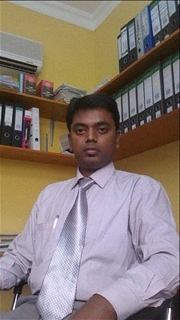Tutor HuntResources Tamil Resources
Spoken Tamil
History and Important of Tamil language
Date : 15/08/2013
Author Information

Uploaded by : Vinoth
Uploaded on : 15/08/2013
Subject : Tamil
The land of Tamil speech and people was in ancient times ruled by three famous lines of king, the Chera, Chola, and Pandiya. . The land ruled by them was called Chera Nadu (Chera country), Chola Nadu (Chola country), and Pandiya Nadu (Pandiaya country) respectively.
The landmass covered by the present-day Kerala State in the South India formed a major part of Chera Nadu, the Central and Northern parts of present Tamil Nadu were the then Chola Nadu and the Southern part of Tamil Nadu was the Pandiya Nadu.
Tamils are of Dravidian origin. Many historians claim that the Dravidians, before the dawn of the history of the Tamils, were spread all over India. For various reason they split into small groups. Consequently, the original language also split into different languages. Tamil is found to have retained about 80 per cent of the features of the original Dravidian language.
There are three major sub-groups in the Dravidian family of language, namely, South Dravidian, Central Dravidian, and North Dravidian.
The languages of the South Dravidian sub-group is mainly,
1. Tamil 2. Malayalam 3. Kodagu 4. Kota 5. Toda 6. Kannada 7. Tulu
The languages of the Central Dravidian sub-group are mainly:
1. Telugu 2. Gondi 3. Konda 4. Pengo 5. Manda 6. Kui 7. Kuvi 8. Kolami 9. Nayki 10. Parji 11. Gadba
The languages of the North Dravidian sub-group are mainly:
1. Kurukh 2. Malto 3. Brahui
Tamil is spoken predominantly in the Indian state of Tamil Nadu. It is spoken also in several other Indian states. In addition, Tamil speaking populations are found in Sri Lanka, Malaysia, Singapore, Mauritius, Fiji Islands and South Africa. Recent Tamil immigrants are found all over the world. The distribution of Tamil-speaking population found in the States of India according to the book 'Distribution of Languages in India in States and Union Territories', 1971, is given below:
For our purposes, the Tamil literature may broadly be classified into: (i) Sangam Classics (ii) Bhakthi or Devotional Literature (iii) Ethics, and (iv) Modern Literature
(i) Sangam Classics The early Tamil literatures are called Sangam Classics. Though there are controversies over the time of the Classics, generally the period between 200 BCE and 500 CE is considered the period of Sangam. Sangam Classics are mostly descri ptive. They describe nature, human feelings, love, lovers, husband-wife relations, war, etc. Pathuppattu, an anthology of ten poems, and Ettuthokai, a collection of eight anthologies, are two major Sangam Classics.
The following are known as Pathuppattu. 1. Thirumurukarruppadai 2. Porunararruppadai 3. Perumpanarruppadai 4. Sirupanarruppadai 5. Mullaippattu 6. Maduraikanchi 7. Nedunalvadai 8. Kurinchippattu 9. Pattinappalai 10. Malaipadukadam
The following are known as Ettuthokai. 1. Narrinai 2. Kurunthokai 3. Aynkurunuru 4. Pathirruppathu 5. Paripadal 6. Kalithokai 7. Agananuru 8. Purananuru
In addition to these, there is another set of poems known as Pathinenkizhkankku that includes the following: 1. Naladiar 2. Nanmanikkadikai 3. Iniyavai Narpathu 4. Inna Narpathu 5. Kar Narpathu 6. Kalavazhi Narpathu 7. Thinaimozhi Aymathu 8. Thinaimalai Nurrayamathu 9. Aynthinai Aymathu 10. Aynthinai Ezhu pthu 11. Thirikadugam 12. Thirukkural 13. Asarkkovai 14. Pazhamozhi Nanuru 15. Sirupanjamulam 16. Mudumozhikkanci 17. Elathi 18. Kaynnilai
Many of the poems in this collection seem to belong to the post-Sangham Age. It is widely accepted that among these, Thirukkural was composed before the second century CE. The Thirukkural consists of 1330 Kural, which are short verses of seven words. Thiruvalluvar is the author of this book. This book consists of three major divisions, namely, Arathuppal, Porutpal and Inbathupal.
Arathupal deals with family life and ascetic life, which are called Illaram and Turavaram respectively. Perhaps this could be somewhat equated with the Sanskrit division Dharma (virtue). Porutpal deals with the rulers and the ruled and all the other.htmlects relevant to them. Perhaps this could be equated with the Sanskrit division Artha (meaning). Inbathuppal deals with love both premarital and extramarital. This could be somewhat equated with Kama (marital love). In short, Thirukkural is a very good guide for life and an excellent literary work to enjoy. This book has been translated into many Indian and foreign languages.
This resource was uploaded by: Vinoth
